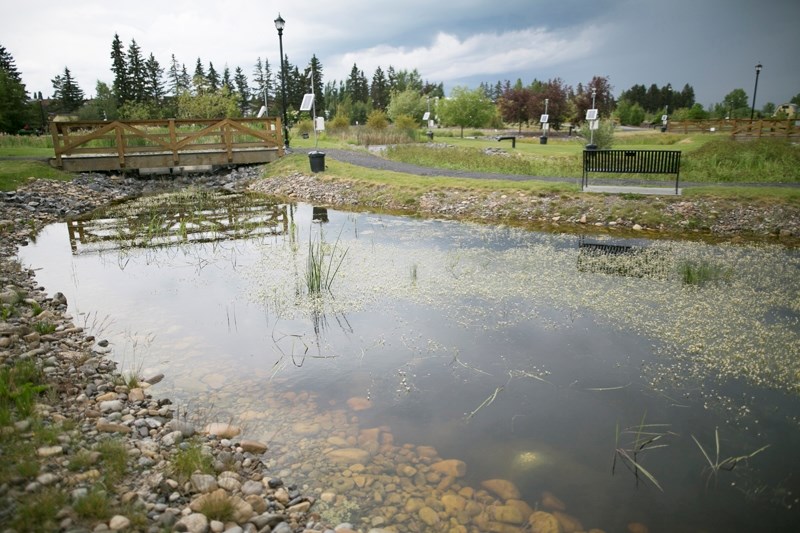Olds College has constructed wetlands in its backyard to uncover the mysteries of how they work.
Ruth Elvestad, a research technician at Olds College, said their wetlands have a variety of uses.
“The prime purpose of the Olds College Constructed Wetlands is education. The Olds College Constructed Wetlands are used as an outdoor laboratory by people of all ages.”
Like natural wetlands, this artificial one treats and polishes water, specifically the runoff from Olds College.
It also stores fresh water and acts as a flood mitigation tool.
Opened in September 2013, the Treatment Wetlands are the third phase of the Botanic Gardens at Olds College. They are spread over 20 acres, encompass nine ponds and have a pathway system that's 1.3 kilometres in length.
Olds College has learned much from studying the Treatment Wetlands.
“The main thing is you need to emulate the natural wetlands,” Elvestad said. “Don't try to do things that aren't natural with natural plants.”
For example, Olds College was unable to successfully grow any horsetail in its ponds due to their rocky shores and relatively deep water.
Horsetail is useful because it filters out heavy metals.
Most wetland research at Olds College at the present time is devoted to finding out what plants are cleaning water and how they do so.
“It's through absorption,” Elvestad said. “Different types of plants will absorb different types of metals and minerals.”
Presently, Olds College is most interested in determining what plants best absorb phosphorus and nitrate.
However, the Treatment Wetlands are only three years old, meaning it still has to find its equilibrium in order to be fully effective at treating water.
Elvestad said that wetlands plants could only handle so many impurities and that having wetlands isn't a go-ahead to start dumping waste indiscriminately.
“They're only one of the tools cleaning the environment. We have to help.”
Human development has taken away 70 per cent of Alberta's historic wetlands. Now the environment's ability to store and purify water has been compromised.
Because water management has been shown in recent years to be a critical part of sustainable horticulture, both industry and the province have been asking Olds College to examine this problem.
Others, such as High Plains Industrial Park in Rocky View County, are copying Olds College by building wetlands of their own so they can keep the runoff water quality high for recycling within the industrial park. This water is used for industrial washing operations and for irrigation within the park.
The Treatment Wetlands are open to the public and can host weddings, graduations, workshops, family gatherings and educational tours.
Elvestad said they hope the Treatment Wetlands will become a recreation hotspot in Olds where people can jog, have picnic lunches, enjoy nature and learn about the overall function of wetlands and the positive effect they have on our daily lives.
“We want the Olds College Constructed Wetlands to become an Alberta destination.”



